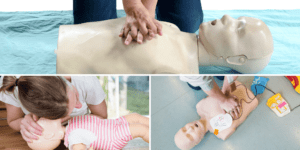
The COVID-19 pandemic led to the adaptation of the well versed basic life support protocols. In order to reduce the potential risk of spread, the Resus Council UK made a number of adaptations and recommendations.
The concern at the start of the pandemic was that by giving rescue breaths, and other airway manoeuvres, there was a risk of generating aerosol. In addition, there was a concern that COVID-19 was transmitted through direct contact or via fomites. Therefore by stoping rescue breaths there would be a reduction in transmission and associated cases of Covid-19. As evidence has evolved, the predominant route of transmission has been identified as being through the aerosol route rather than these other routes.
In summary a number of things:
Therefore the risk of transmission occurring through administering breaths or using other airway adjuncts has been identified as being very low risk.
In brief, yes. The Resus Council UK now advise that we should revert to the 2021 basic life support guidelines. These include giving rescue breaths for a casualty who is not breathing:
Although risk from giving breaths has been identified as being low risk, at this point evidence around whether chest compressions create enough aerosol to pose a risk is limited. Therefore the Resus Council UK advise:
“For those working in healthcare settings, the use of FFP3 masks or respirators as well as eye protection is still recommended when performing chest compressions for patients with suspected or confirmed COVID-19. AGP PPE, in particular FFP3 mask/respirator and eye protection, should be donned as swiftly as possible to avoid any delays in treatment.”
Resuscitation Council UK – Guidance: COVID-19
For all clinical staff members, the Resus Council UK Quality Standards stipulate at least annual updates with simulation and assessment.
For non-clinical staff members, it is also recommended that annual updates are completed, as non-clinical members of the team may be the only person available to immediately support the clinical staff member.
Health Academy has a wide range of Basic Life Support courses that meet clinical and non-clinical staff needs.


If you are looking for training for a group, contact us and we will be able to discuss your needs
Giving you written and video content to answer all your questions on primary care education from Phlebotomy to Travel Health.
Subscribe now to be kept updated with our latest posts and insights.